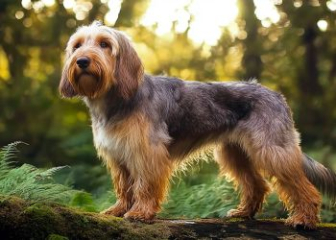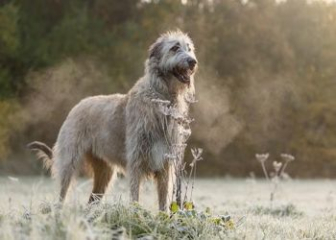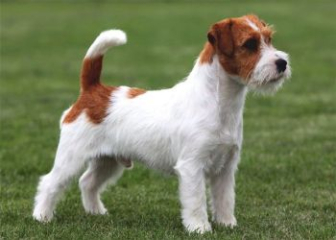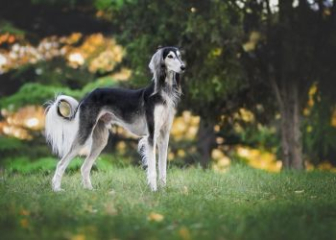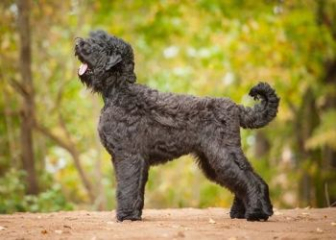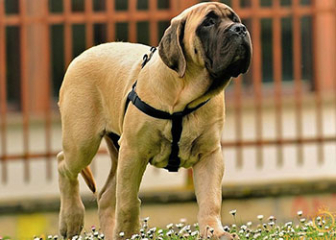Saint Bernard, the Giant Rescue Dog in the Snow
Blog | by
The Saint Bernard (St. Bernard) is a giant dog breed originating from Switzerland, known for its gentle, friendly nature, making it well-suited for rescue work.
The Saint Bernard is a rescue dog breed from the Swiss Alps. It has a massive appearance, with a weight that can reach up to 120 kg. Its life expectancy is relatively short, ranging from 8 to 10 years, and it is known for its incredibly friendly and gentle temperament.
If you want to learn more about the origin, appearance, personality, or how to care for a Saint Bernard, be sure to read the detailed article below dog breed!
Where does the Saint Bernard come from?
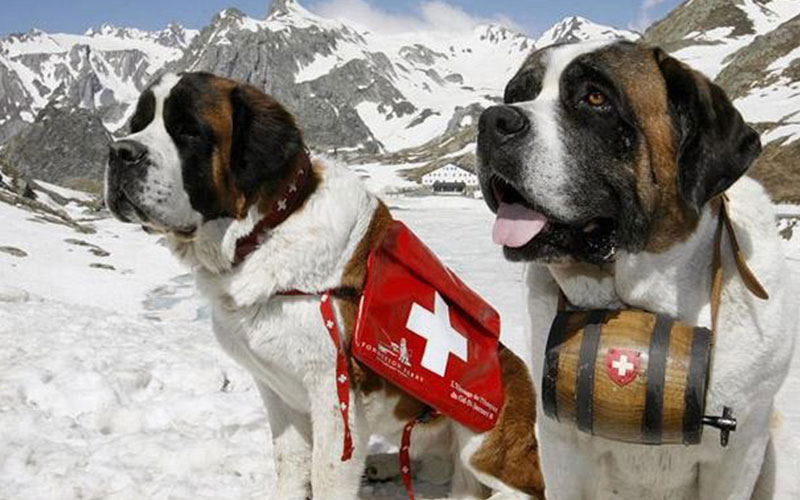
Saint Bernard - Rescue Dog in the Snow at the Alps (Switzerland)
The Saint Bernard is a dog breed originating from the Alps mountain range in Switzerland, an area known for its cold and harsh climate year-round.
History and Development of the Saint Bernard:
-
The Saint Bernard comes from the ancient Molosser dogs of Rome, which were brought to the Alps during the conquest of the region.
-
In the 11th century, at the Saint Bernard Monastery (located in the Alps), this breed was raised to rescue people lost in the snow with its compact build and excellent endurance.
-
By the 17th century, this breed was bred to have a larger size, thicker fur, better cold resistance, and enhanced scent-tracking abilities.
-
By the 19th century, Saint Bernard dogs were widely bred and recognized as the official dog breed of Switzerland.
-
Today, with its large size and friendly temperament, this breed is known worldwide and has become a special pet.
Classification of Saint Bernard Dogs
Based on the coat, Saint Bernard dogs are divided into two types: short-haired Saint Bernard and long-haired Saint Bernard. Here's the breakdown:
Short-haired Saint Bernard
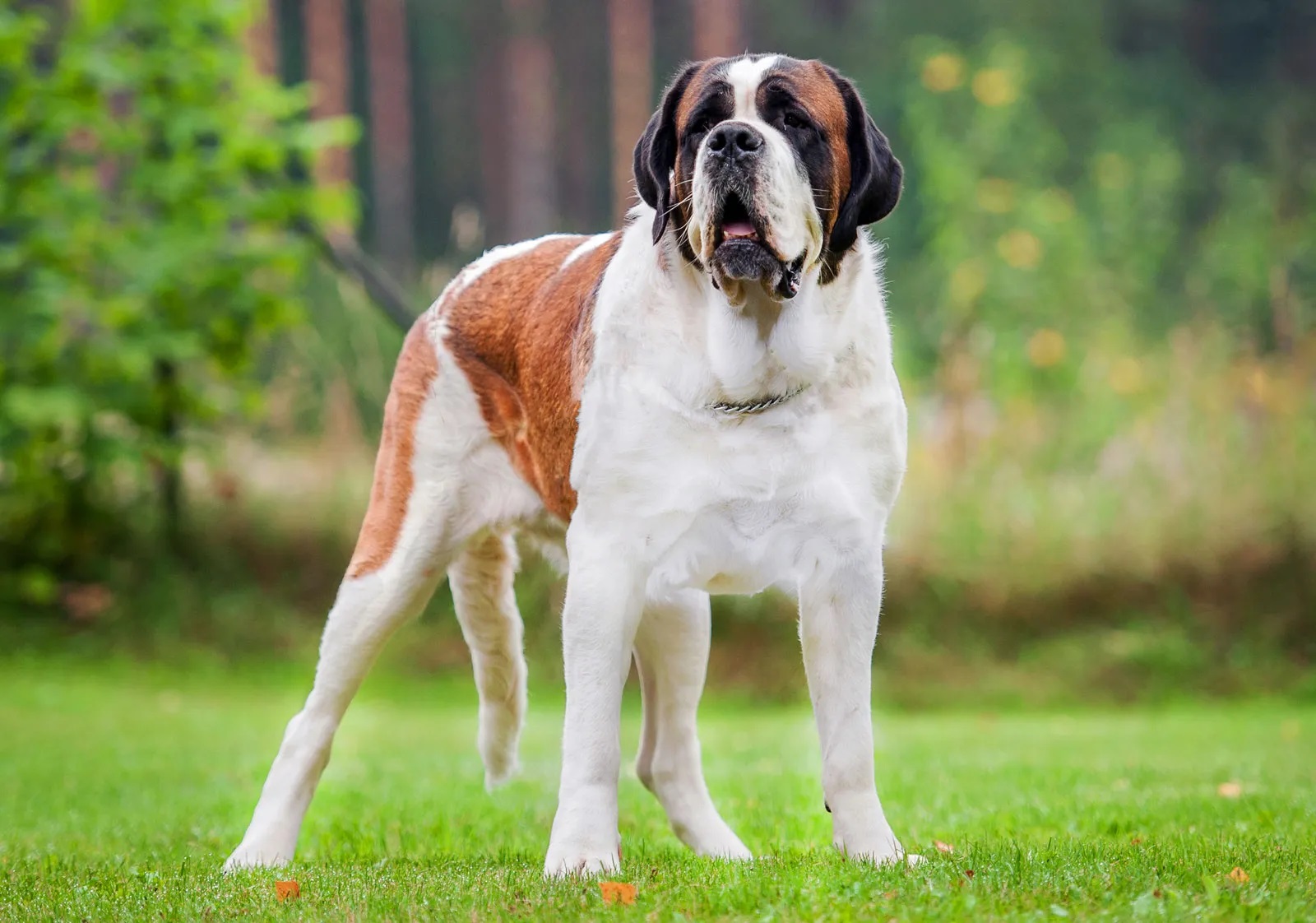
Short-haired Saint Bernard
The short-haired Saint Bernard is the original type of Saint Bernard bred at the Saint Bernard Monastery. The short coat was designed to prevent it from freezing in the cold, snowy weather. Here are its key features:
-
Short, smooth coat.
-
Easy to care for, with minimal shedding.
-
Suitable for warmer, temperate climates.
Long-haired Saint Bernard
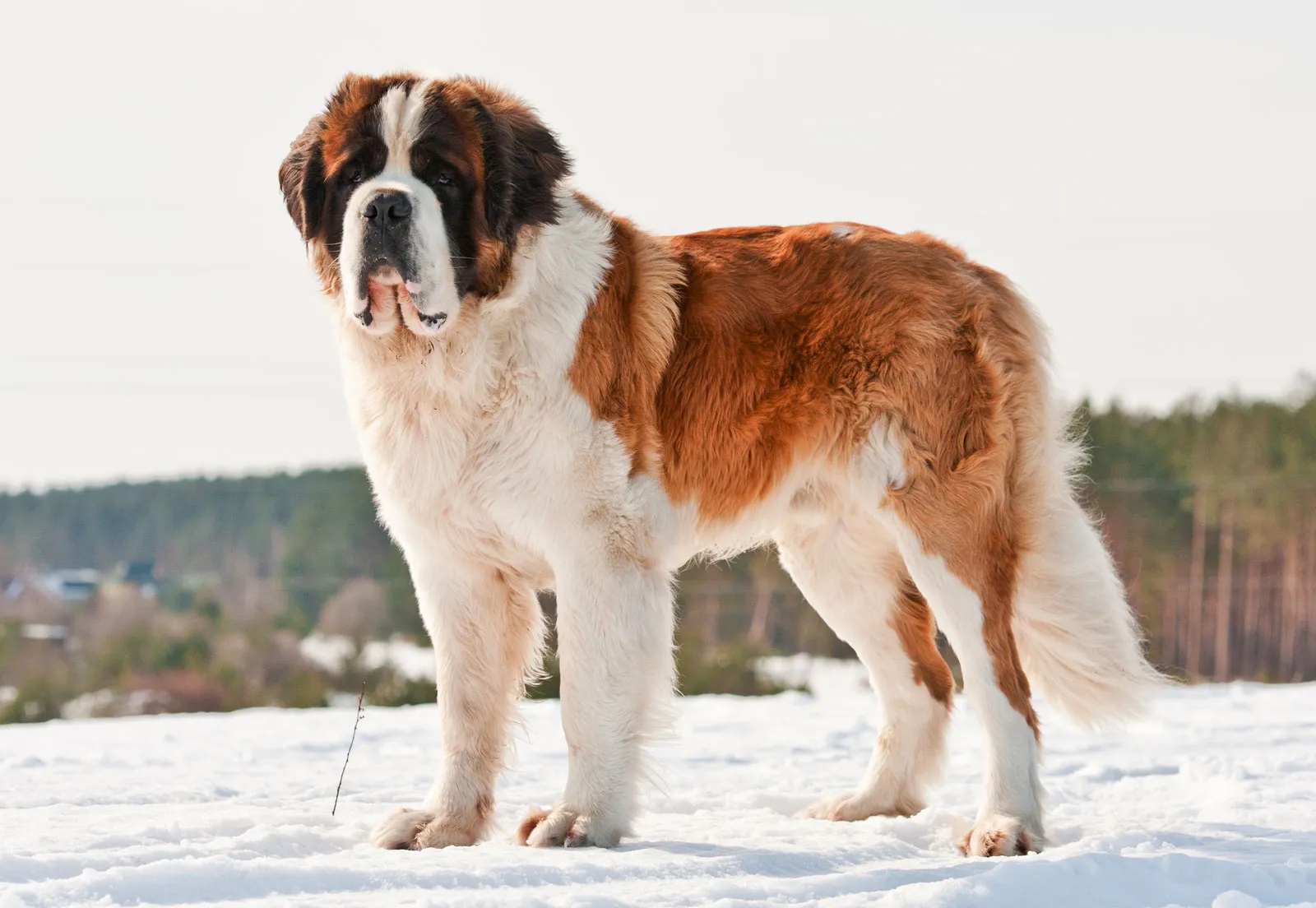
Long-haired Saint Bernard
This breed was developed by crossing the short-haired Saint Bernard with long-haired breeds like the Newfoundland. They have the following characteristics:
-
Longer coat, slightly wavy, tends to shed more.
-
A more majestic appearance.
-
Excellent ability to withstand cold weather.
Physical Characteristics of the Saint Bernard
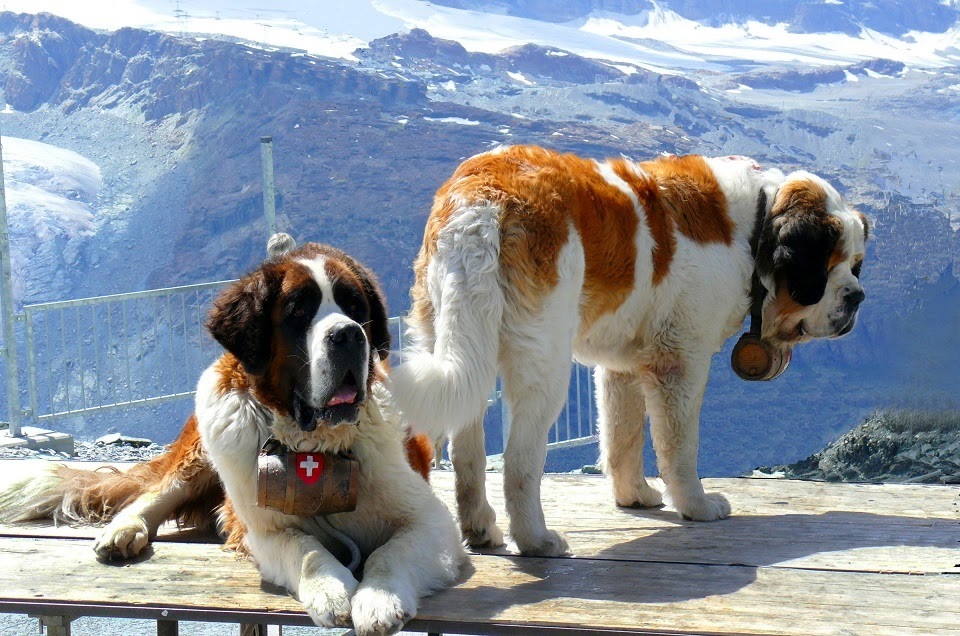
Two purebred Saint Bernard dogs.
Saint Bernard is one of the largest dog breeds in the world (larger than the Tibetan Mastiff), with a muscular body, thick coat, and gentle face. Let’s dive deeper into the physical characteristics of a purebred Saint Bernard dog.
-
Height: Males: 70 - 90 cm, Females: 65 - 80 cm.
-
Weight: Males: 64 - 120 kg, Females: 54 - 80 kg.
-
Head: Large, round, broad, and very majestic.
-
Eyes: Large, deep-set, almond-shaped, typically brown or amber.
-
Ears: Large, drooping down on both sides.
-
Muzzle: Wide, slightly square, with lots of loose skin.
-
Nose: Large, black.
-
Neck: Short but strong.
-
Chest: Deep and wide.
-
Legs: Large, muscular, with large paws, and thick fur between the toes, helping them move well in snow.
-
Tail: Long, thick, and covered in fur.
-
Coat: Short or long; short fur is smooth, shiny, and fits closely to the body, while long fur has a slight wave.
-
Coat Color: Commonly white and brown, red and white (most common), white and yellow (rare), black, white, and brown (extremely rare). The fur on the chest, legs, and tail is typically white.
-
Average Lifespan: 8 - 10 years.
Personality of the Saint Bernard

Saint Bernard is super friendly with children.
Saint Bernard is also known as the "gentle giant" because of its incredibly friendly, loyal, and affectionate nature. Let’s explore more about the personality traits of this breed.
Gentle and Friendly
Saint Bernard is one of the gentlest dog breeds. It is extremely friendly and gentle with humans and other pets. Despite its giant size, it loves being cuddled and lying next to its owner. These dogs are not aggressive by nature, so they rarely attack strangers unless provoked.
Calm and Patient
Saint Bernards are very calm, even in stressful situations. They rarely get agitated, and they only bark when something unusual happens. They are especially patient, especially with children, making them great companions for families.
Not an Ideal Guard Dog
Although Saint Bernard has a majestic and large appearance, it is not a great guard dog. It doesn’t have the instinct to attack intruders and is very friendly toward strangers. When faced with danger, it will typically just bark to alert the owner but won’t be aggressive.
A Little Lazy
Saint Bernard is not overly energetic and prefers to lie down inside rather than run around outside. Therefore, it’s essential to encourage some physical activity to prevent obesity in this breed.
Comprehensive care guide for Saint Bernard dogs

Two Saint Bernard dogs resting on the grass.
If you're planning to own a Saint Bernard, here's a detailed care guide for this breed:
Diet for Saint Bernard by Age
To ensure your Saint Bernard remains healthy and develops properly, follow the recommended diet below:
Food Saint Bernard Should Eat
-
Protein-rich foods: Chicken, beef, pork, offal, eggs.
-
Healthy fats: Fish fat, olive oil.
-
Carbohydrates: Grains, sweet potatoes, brown rice, bread, potatoes.
-
Fiber & vitamins: Vegetables and fruits such as carrots, pumpkin, broccoli, kale, apples, etc.
-
Calcium & glucosamine.
-
Fresh water.
-
High-nutrient dog food.
Food to Avoid for Saint Bernard:
-
Chocolate, onions, garlic, as they can cause poisoning and diarrhea.
-
Sharp bones, as they can cause choking.
-
Foods with high fat and spices.
Diet Recommendations by Age:
| Age of Saint Bernard | Meals per Day | Notes |
|---|---|---|
| 2 - 4 months | 4 meals/day | Soft food, rich in calcium, finely chopped vegetables. |
| 4 - 8 months | 3 meals/day | Increase protein, control fat and starch. |
| Over 8 months | 2 meals/day | Full nutrient intake, supplement with high-nutrient kibble if preferred. |
Physical Exercise for Saint Bernard
Saint Bernard is not an overly active dog; it eats a lot but prefers lounging, so you need to have a reasonable exercise plan to keep your dog healthy and prevent obesity.
-
Daily walks, 30 - 45 minutes.
-
Engage in games like tug-of-war, gentle running, hill climbing.
-
Avoid exercise in hot weather as they are prone to heatstroke.
Grooming and Hygiene for Saint Bernard
Saint Bernard has thick, long fur that can mat and get dirty, so proper grooming is essential to keep the dog clean and prevent skin diseases.
-
Brush their fur regularly, bathe 1 - 2 times per month, using shampoo and body wash specifically for thick-coated dogs.
-
Clean eyes with a clean towel every day.
-
Regularly check and clean inside the ears.
-
Brush their teeth daily to keep oral hygiene and eliminate tartar.
Training and Behavioral Adjustment for Saint Bernard
Because Saint Bernard is a giant breed, you need to train them from a young age to prevent stubbornness and aggression.
-
Teach Saint Bernard to potty in the right place and avoid jumping on people as this can be dangerous.
-
Socialize early to get them accustomed to other animals and strangers.
-
Be patient; avoid scolding, instead reward with affection and praise.
Vaccinations and Health Control for Saint Bernard
An important aspect of owning a Saint Bernard is regular vaccinations and health monitoring. Here’s what you need to do:
-
Ensure full vaccination, including the 5-in-1, 7-in-1, and rabies vaccines.
-
Deworm regularly, 2 - 3 times a year.
-
Spray flea and tick medicine regularly.
-
Schedule health check-ups to monitor for diseases.
Common Diseases in Saint Bernard
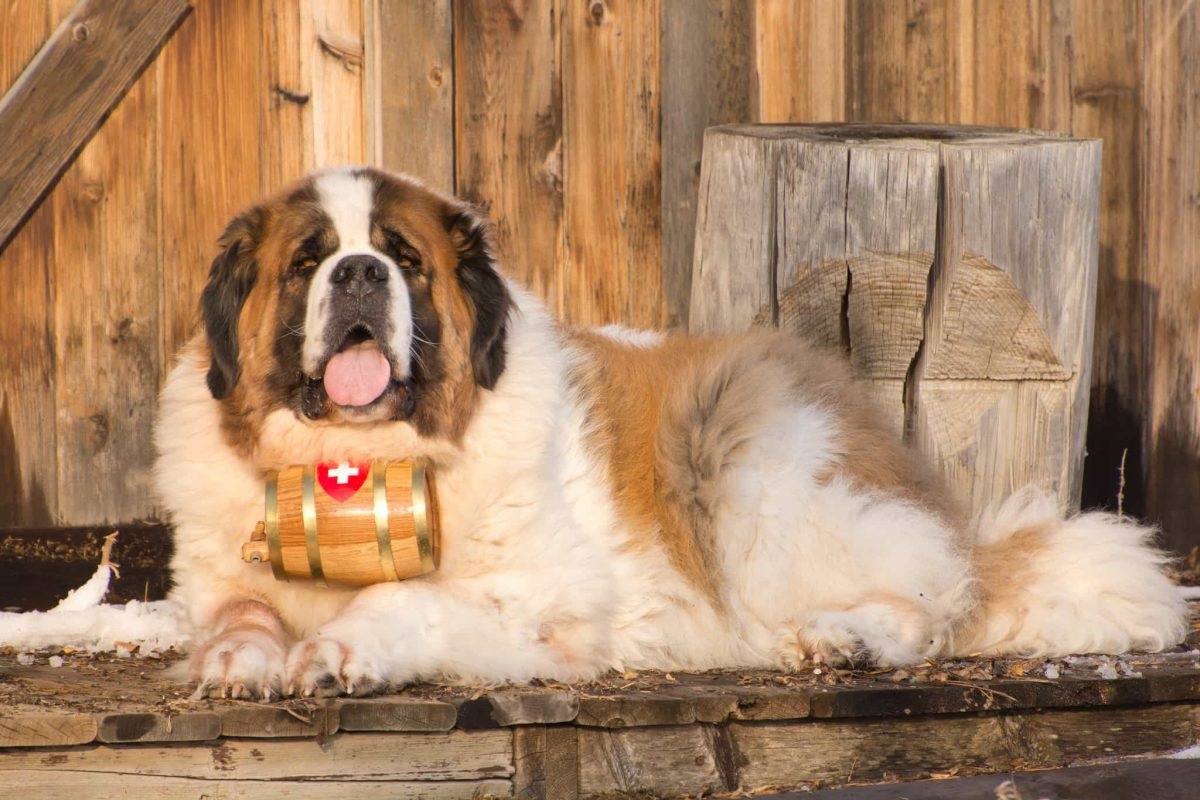
Saint Bernard dogs are prone to obesity.
Below are some diseases that St. Bernard dogs may experience. Some diseases are hereditary, others related to body size or external factors. Let's learn more to effectively recognize and prevent them.
Hip Dysplasia in Saint Bernard Dogs
This hereditary condition often occurs in large breeds, thus St. Bernard dogs have a high risk of developing this condition.
-
Cause: Genetic
-
Symptoms: Difficulty moving, hip pain when touched, whining, reluctance to perform intense physical activities.
-
Prevention and Treatment: Control diet to avoid obesity, provide calcium, omega 3, glucosamine supplements, limit intensive physical activities when the dog is young.
Obesity in Saint Bernard Dogs
Saint Bernard is a large breed but tends to be lazy, making them susceptible to obesity.
-
Cause: Excessive starch intake, frequent snacks, insufficient exercise.
-
Symptoms: Rapid weight gain, large belly, panting, laziness, lethargy.
-
Prevention and Treatment: Carefully manage daily diet, encourage exercise, increase vegetable intake, limit snacks.
Dermatitis and Mange in Saint Bernard Dogs
Saint Bernard dogs have thick, long coats that can easily mat. If not properly groomed, they're susceptible to skin diseases such as dermatitis, mange, and sores.
-
Cause: Thick coat prone to bacteria growth, improper grooming, bathing, and environmental factors.
-
Symptoms: Ulcerated skin, swelling, pus formation, bad odor, excessive scratching, rubbing against floors, and significant hair loss in patches.
-
Prevention and Treatment: Regular grooming, bathing, keeping coat clean and dry. See a veterinarian immediately if severe symptoms develop.
Ear infections in Saint Bernard Dogs
Saint Bernard dogs have droopy ears, which can harbor bacteria if not cleaned thoroughly, leading to ear infections.
-
Cause: Long, floppy, hairy ears and poor hygiene.
-
Symptoms: Excessive ear scratching, continuous head shaking, foul odor, whining from pain.
-
Prevention and Treatment: Regular ear cleaning, trimming ear hair, and immediate veterinary attention for severe infections.
Saint Bernard Dogs Price List in Vietnam
If you’re wondering how much a Saint Bernard dog costs and if they are expensive, please refer to the price list below:
| Origin | Reference Price | Notes |
|---|---|---|
| Saint Bernard bred in Vietnam without documents | 10 - 15 million VND | No paperwork proving origin; may not be purebred. |
| Saint Bernard bred in Vietnam with documents | 15 - 25 million VND | VKA paperwork, purebred, complete vaccination records, healthy. |
| Saint Bernard imported from Thailand | 20 - 30 million VND | Certification paperwork, clear origin, high purity. |
| Saint Bernard imported from Europe | Around 3000 USD (over 70 million VND) | Guaranteed 100% purebred, excellent health and appearance. |
Notes when buying Saint Bernard Dogs
-
Only buy from reputable stores or breeders to guarantee clear origin and reasonable pricing.
-
Carefully inspect the dog's health condition before purchasing, making sure there are no skin diseases, congenital defects, and that the dog is active and healthy.
-
Preferably buy dogs older than 3 months, as they are easier to train and have more stable digestion.
-
Determine your budget clearly, as this breed is expensive and requires special care.
Collection of beautiful Saint Bernard dog images
Below are some of the most beautiful Saint Bernard dog images for you to enjoy.
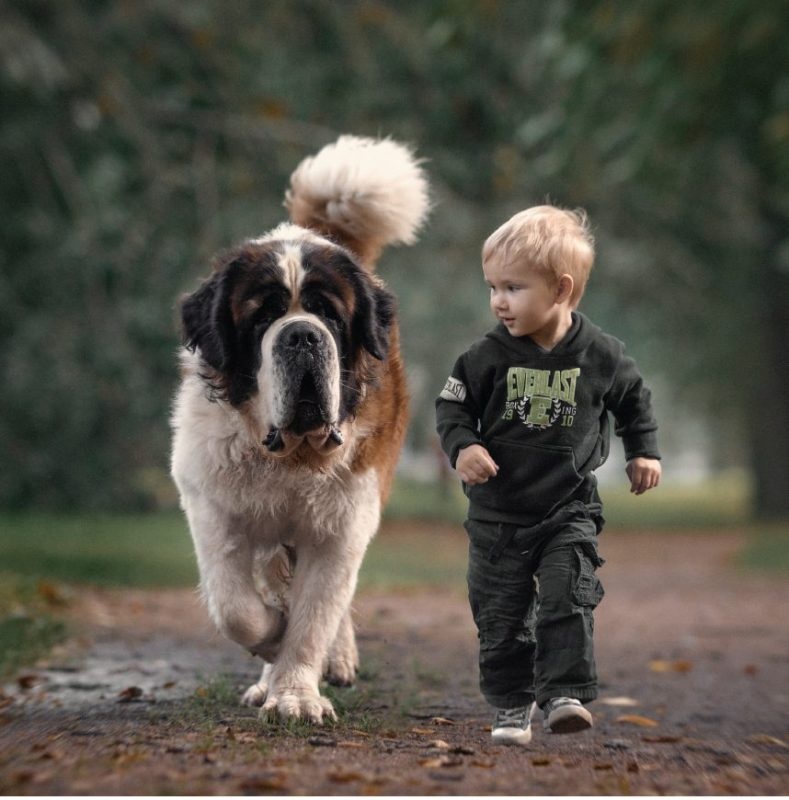
The Saint Bernard dog happily walks next to the little boy

Two St. Bernard dogs are resting in the Alps (Switzerland)
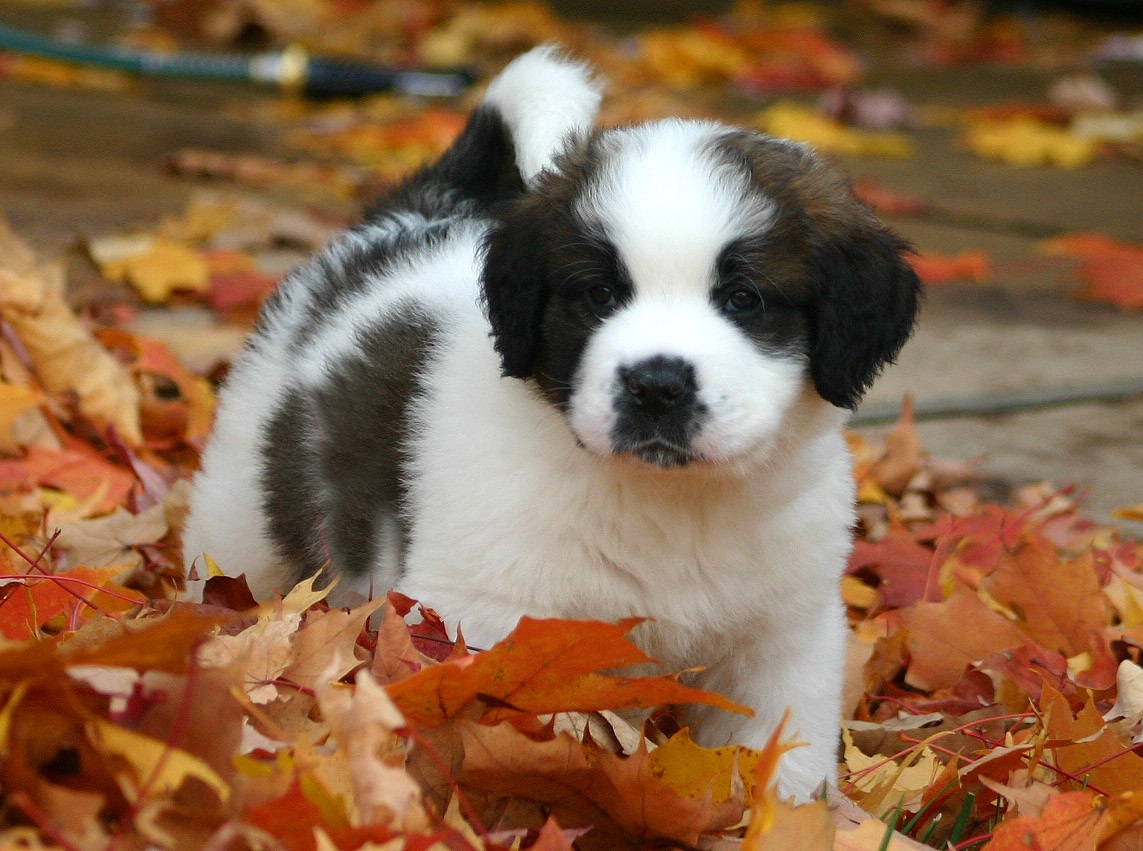
Super cute St.Bernard puppy
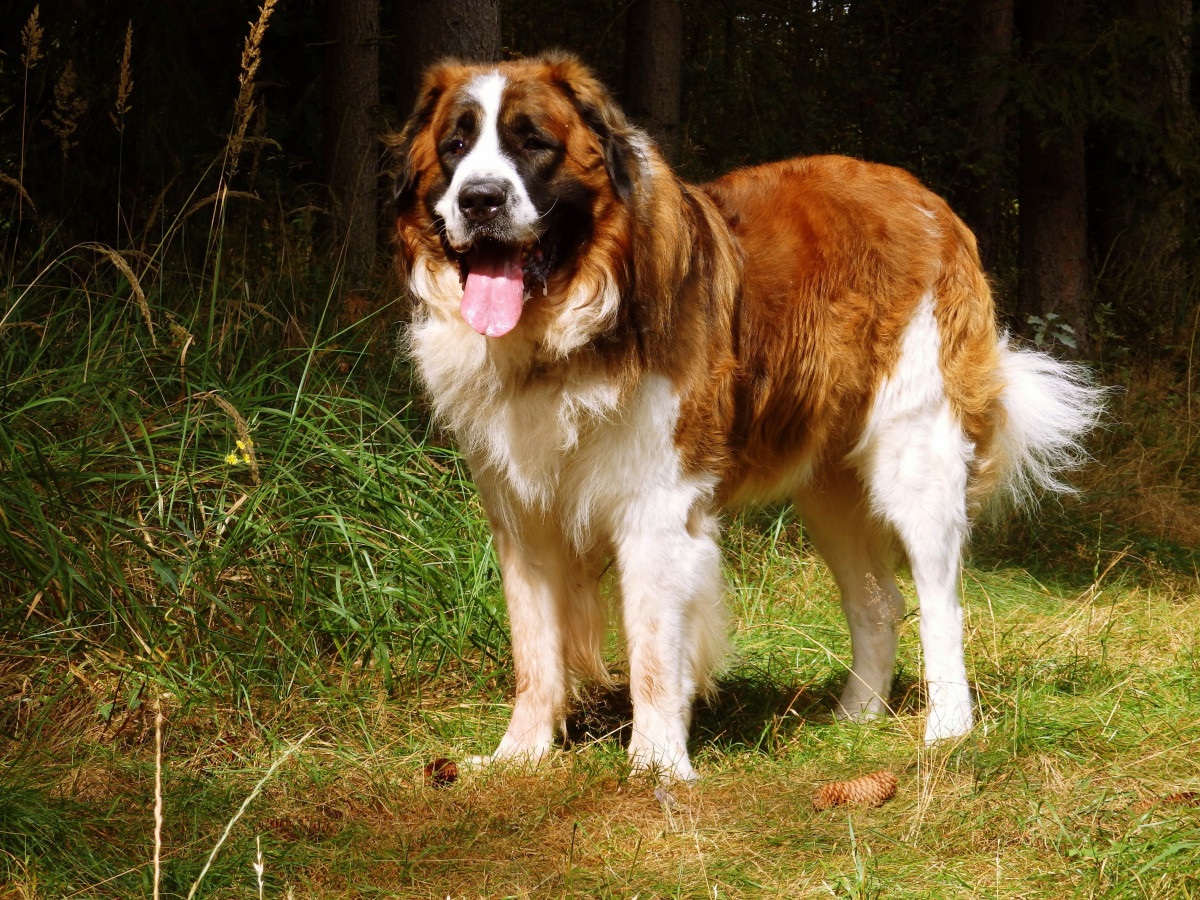
Image of a purebred Saint Bernard dog standing in the forest
Thus, through the information shared above by giongcho.org, you've learned that Saint Bernard dogs are giant yet gentle and friendly. However, this breed is quite expensive, requires ample living space, a specialized diet, and meticulous care, so consider carefully before choosing a Saint Bernard as your pet.
Don’t forget to read more articles in our Blog section to discover many other dog breeds!



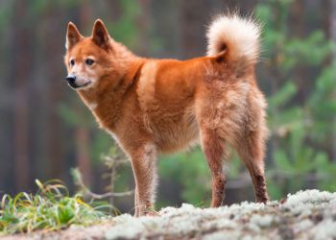





_350x250.jpg)




